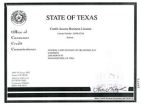Find Out How to Balance a Checkbook
Learning how to balance a checkbook may seem daunting, but it's actually a simple process that can save you tons of stress down the line. With simple calculations and a little planning, you can learn how to manage your money like a pro! Read our best tips and tricks below.
Why Should I Balance My Checkbook?
When dealing with any type of payment, it's important to keep good records. While credit card bills showcase an itemized list of your expenses, it's easy to lose track of your checkbook expenses if you don't keep your own notes. Balancing a checkbook helps you keep a running tally of all your transactions, so you can effectively budget and avoid bounced checks.
How Do I Start?
There are many ways to record your transactions. Each checkbook comes with a little notebook that's designed to record your expenses, along with the date and description of each payment. If you don't have this slip handy, feel free to make your own! Use a notebook, graph paper, or print out your own customized forms.
Then, find your current checking balance with your preferred method: log into your online account, visit an ATM, or speak with a bank representative. Write the total at the top of your notebook to get your starting point for the month.
What Should I Record?
Taking thorough and accurate notes is the key to your success, so take a little extra time to get everything right. Two important concepts are debit and credit. Debit is money that is taken out of your account: bills, groceries, mortgage, etc. Credit is money credited back to your account: income, returns, etc. Be sure to track both amounts to get a better idea of where your money is coming and going.
If you share a checking account, then it's a good idea to coordinate your efforts with them as well. Here is a general overview of what to record:
- Withdrawals: Whether using an ATM or debit card, keep track of every bank withdrawal.
- Payments: Take note of the amount, date, and payee - don't forget the confirmation code or checking number if applicable.
- Deposits: If any extra funds are added to the account, be sure to write those down too!
How Do I Balance My Checkbook?
Now that you've gotten into the swing of things, it's time to balance your checkbook. The idea is simple: Subtract all of your debits from your credits. Typically, that means you'll subtract things like bills and shopping expenses from your paycheck. The result should be a positive number, which you'll record as your new balance. If you have trouble with bounced checks, consider doing this process every transaction or two to get a better sense of your money flow. A cash advance or payday loan may be helpful if you overdraw your account.
After your bank statement arrives, double check your work! You'll have brand new information to add detail to your records, like banking fees and account interest. But overall, your figures should be very similar. Correct any errors in your own records to improve your checkbook balancing skills, and talk to the bank if you find any errors on their end. Once you are done, draw a double line at the end of your calculations to indicate the end of a financial cycle.
